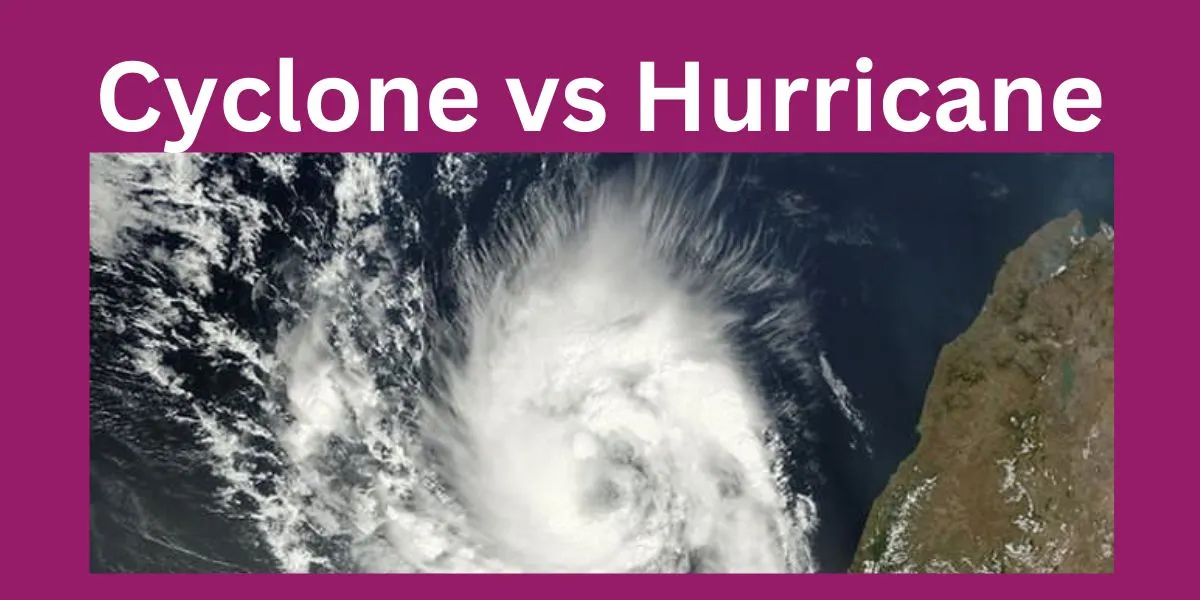Natural disasters can be both fascinating and terrifying. Cyclones, hurricanes, and typhoons often dominate headlines, and while they’re all powerful storms, you might wonder—are they actually different from one another? Or are these just different names for the same event?
Understanding the distinctions, similarities, and impacts of cyclones and hurricanes can give you a clearer picture of these phenomena. Let’s dive into what makes a cyclone a cyclone, a hurricane a hurricane, and why their names differ across the world.
What Are Cyclones and Hurricanes?
Cyclones and hurricanes are both massive, swirling storms with powerful winds and heavy rain. They’re both types of tropical cyclones—a general term used for these storm systems. Essentially, these storms form over warm ocean waters near the equator and can cause severe damage.
Are Cyclones and Hurricanes the Same Thing?
Yes and no. Technically, they’re the same type of storm: a tropical cyclone. However, the main difference comes down to location. Where these storms form dictates whether we call them a cyclone, hurricane, or even a typhoon.
Cyclone vs Hurricane: Key Differences
Location, Location, Location!
- Hurricanes: Form in the Atlantic Ocean and Northeast Pacific.
- Cyclones: Occur in the South Pacific and Indian Ocean.
- Typhoons: Develop in the Northwest Pacific Ocean.
These names primarily serve as geographic distinctions, but the storms themselves are structurally similar.
Cyclone vs Hurricane: Key Similarities
Despite their different names, hurricanes and cyclones have more in common than you might think. Both types of storms:
- Form over warm ocean waters (at least 26°C/79°F).
- Feature a rotating system with strong winds and rain.
- Develop a central “eye,” where the winds are calmest.
- Cause dangerous storm surges and flooding when they make landfall.
The Basics of Cyclone Formation
Cyclones need warm, moist air and ocean temperatures to be over 79°F (26°C). Warm, rising air meets cooler air, which creates pressure differences and kicks off a rotating effect due to the Earth’s rotation, known as the Coriolis effect.
How Hurricanes Form
Hurricanes form in similar ways to cyclones. They start as tropical depressions—areas of low pressure and stormy weather. If conditions are right, they’ll grow into tropical storms, and eventually, if wind speeds exceed 74 mph, they’re classified as hurricanes.
Different Naming Conventions Around the World
Ever notice that we call them hurricanes in one place but typhoons or cyclones in another? The World Meteorological Organization assigns storm names to avoid confusion and help with communication. For instance:
- Hurricane: North Atlantic, Northeast Pacific.
- Typhoon: Northwest Pacific.
- Cyclone: South Pacific, Indian Ocean.
These regional names reflect long-standing cultural and geographic conventions.
Where Cyclones and Hurricanes Occur
Most cyclones and hurricanes are found in warm ocean regions:
- Hurricanes: Affect North America, Central America, and parts of East Asia.
- Cyclones: Frequently impact countries like India, Australia, and islands in the South Pacific.
Impacts of Cyclones and Hurricanes
Both types of storms can cause catastrophic damage:
- High Winds: Can reach speeds over 150 mph, tearing through buildings and trees.
- Storm Surges: Rapidly rising ocean water floods coastal areas.
- Heavy Rainfall: Often leads to dangerous floods and landslides.
The scale of impact often depends on the storm’s intensity and where it hits land.
How Are These Storms Measured?
Scientists categorize cyclones and hurricanes based on wind speed and potential damage:
- Cyclones: Often measured on a regional scale, like Australia’s five-category system.
- Hurricanes: Classified using the Saffir-Simpson Hurricane Wind Scale, ranging from Category 1 to Category 5.
Categories and Strength of Hurricanes
The Saffir-Simpson scale rates hurricanes by wind speed:
- Category 1: 74–95 mph – Minor damage.
- Category 2: 96–110 mph – Moderate damage.
- Category 3: 111–129 mph – Devastating damage.
- Category 4: 130–156 mph – Catastrophic damage.
- Category 5: 157 mph or higher – Unprecedented destruction.
Category 3 and above are considered major hurricanes with the potential for extreme damage.
Cyclone Categories and Intensity
Cyclones are also categorized, though the system varies by region. In Australia, for example:
- Category 1: Weak winds and minimal damage.
- Category 5: Extremely powerful with widespread, severe damage.
Like hurricanes, higher-category cyclones are more likely to cause severe harm.
Predicting Cyclones and Hurricanes
Advances in meteorology have greatly improved storm prediction. Using satellite imagery, radar, and computer modeling, scientists can now track these storms in real time and predict their paths.
Preparing for Cyclones and Hurricanes
Preparation can make a world of difference when it comes to surviving these storms. Experts recommend:
- Creating an emergency kit: Stock up on water, food, and first aid.
- Staying informed: Pay attention to official updates.
- Evacuating if necessary: Follow local authorities’ recommendations to stay safe.
Conclusion: Cyclone or Hurricane, Nature is Mighty
Cyclones and hurricanes might have different names, but they’re two sides of the same coin. These natural powerhouses remind us of the Earth’s incredible—and sometimes terrifying—forces. No matter what you call them, these storms are a reminder of the resilience of communities that face them and the importance of preparedness.
FAQs
1. What is the main difference between a cyclone and a hurricane?
The main difference is their location. Hurricanes form in the Atlantic and Northeast Pacific, while cyclones occur in the South Pacific and Indian Ocean.
2. Are typhoons the same as cyclones and hurricanes?
Yes, typhoons are the same type of storm. They form in the Northwest Pacific Ocean, near Asia.
3. Can hurricanes turn into cyclones?
Technically, no. However, if a storm travels across regions, its name may change based on its new location.
4. What’s the strongest hurricane or cyclone category?
Category 5 is the highest category, with wind speeds exceeding 157 mph. Both hurricanes and cyclones can reach this intensity.
5. How long do hurricanes and cyclones typically last?
On average, they last around a week, but the most intense ones can linger for two weeks or more, depending on atmospheric conditions.










